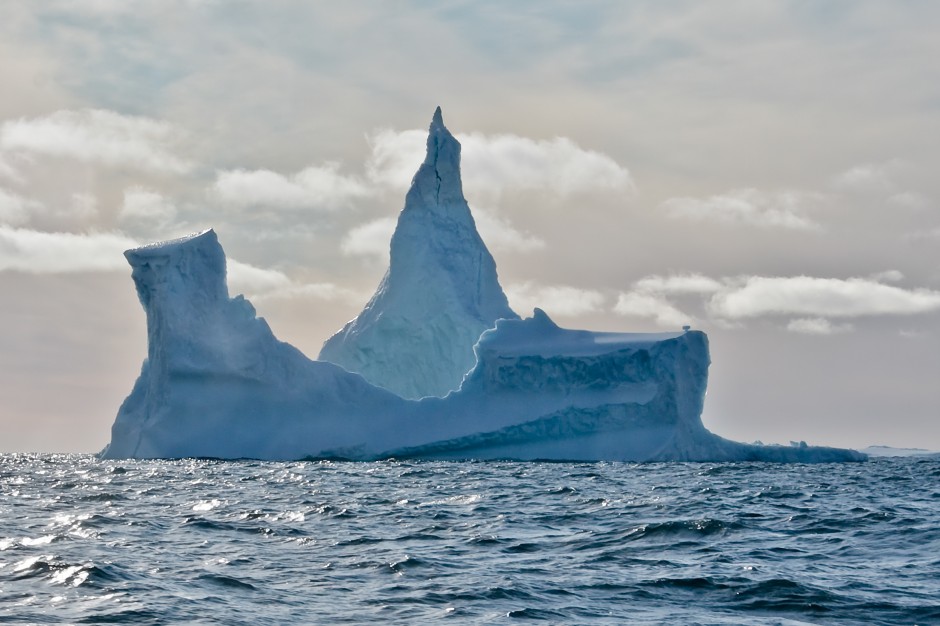
Traveling resource by Romain Schläppy, distributed by EGU under a Creative Commons license
An iceberg is formed when large pieces of ice break from snow-formed glaciers or ice shelves and float through the open oceans carried by wind and currents. They range in size and can be as large as over 75 m high and over 200 m wide, an important threat to unknowing ships.
To that end, last month marked a century since the Titanic sank after colliding with an iceberg, killing over 1,500 passengers. Detection systems, put in place after the 1912 incident, show that icebergs are common along shores such as the east coast of Newfoundland.
Yet despite their associated dangers, icebergs can also be incredibly beautiful, exemplified in this picture taken by Romain Schläppy at Disko Bay on the west coast of Greenland. He explains the September 2011 encounter, “We were on a boat trip between Qeqertarsuaq (on Disko Island) and Ilulissat (southwestern Greenland). The iceberg had been naturally sharpened since its release from Jakobshavn glacier, which provides about 10% of all icebergs in Greenland and is itself moving at speeds of up to 20 meters per day.”
Imaggeo is the online open access geosciences image repository of the European Geosciences Union. Every geoscientist who is an amateur photographer (but also other people) can submit their images to this repository. Being open access, it can be used by scientists for their presentations or publications as well as by the press. If you submit your images to imaggeo, you retain full rights of use, since they are licenced and distributed by EGU under a Creative Commons licence.
